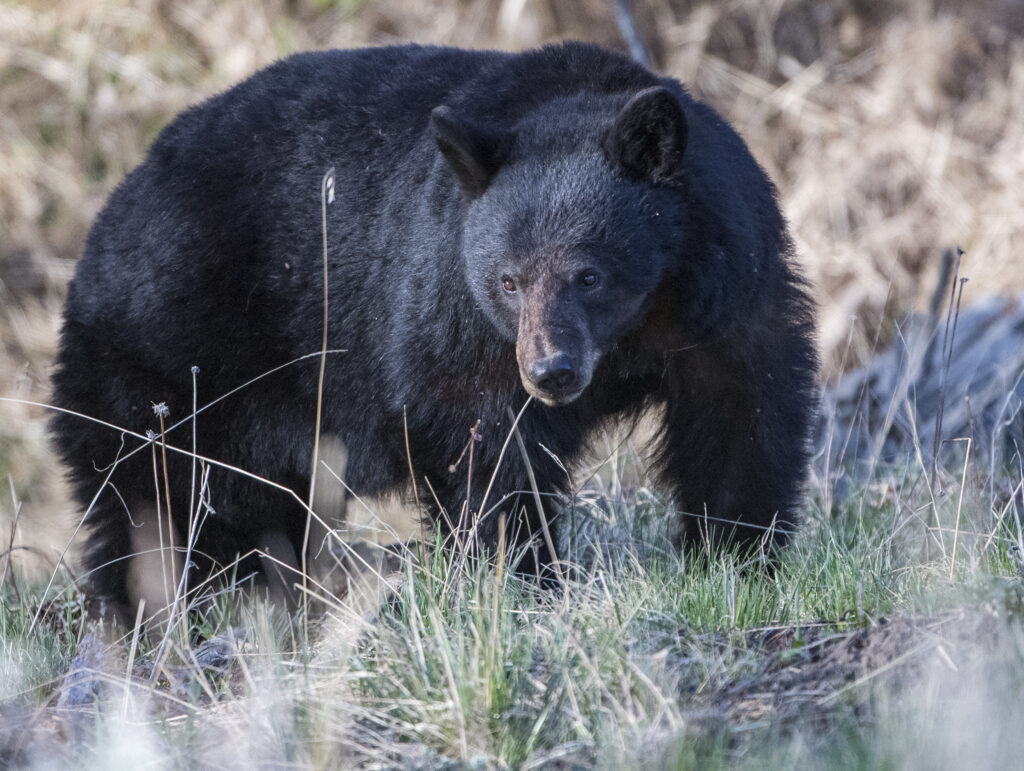An adult female black bear was euthanised by Yellowstone National Park staff after displaying repeated food-conditioned behaviours, according to a park press release.
Newsweek contacted Yellowstone National Park for comment via online form on Sunday outside of usual working hours.
Why It Matters
This marks the first black bear euthanised in Yellowstone for food conditioning since July 2020. In May of this year, an unrelated 11-year-old male grizzly was also euthanised after flipping over multiple bear-resistant dumpsters in high-traffic areas like Old Faithful and Nez Perce Picnic Area, as reported by East Idaho News.
What To Know
Park officials said the actions took place around 5 p.m. on July 11, at a backcountry campsite in the Blacktail Deer Creek drainage in northern Yellowstone.
Officials said that the bear’s escalating behavior, including property damage and obtaining a significant food reward, posed a clear threat to visitor safety and warranted removal.
The release states that the decision to kill the bear was based on ongoing concern for human safety, property damage to camping equipment, and the bear learning to defeat the park’s backcountry food storage poles to obtain human food.
The bear had previously crushed an unused tent on June 7 and later climbed a properly secured food storage pole to access campers’ food bags on July 11.
Although incidents involving bears obtaining human food at Yellowstone remain uncommon, when they do occur, the animal may quickly lose its natural wariness of humans. Park authorities warned that such bold behaviour raises serious safety concerns.
Yellowstone National Park stretches from Wyoming into Montana, and Idaho and was established as a national park by President Ulysses S. Grant on March 1, 1872. It is the first national park in the United States. The park spans more than 3,468.4 square miles.
Yellowstone is home to both grizzly bears and black bears, one of the few places south of Canada where the two species live side by side.
What People Are Saying
Yellowstone’s bear management biologist Kerry Gunther said in the news release: “We go to great lengths to protect bears and prevent them from gaining access to human food in all areas of the park. But occasionally, a bear outsmarts us or overcomes our defenses. When that happens, we sometimes have to make the difficult decision to remove the bear from the population to protect people and property.”
The park’s website states: “Visitors should be aware that all bears are potentially dangerous. Park regulations require that people stay at least 100 yards (91 meters) from bears (unless safely in your car as a bear moves by).
“Bears need your concern, not your food; it is against the law to feed any park wildlife, including bears. All of Yellowstone is bear habitat – from the deepest backcountry to the boardwalks around Old Faithful. Prepare for bear encounters no matter where you go by learning more about bear safety.”
What Happens Next
Yellowstone continues to require all backcountry campers to use either food storage poles or bear-resistant food containers at the park’s 293 campsites. Officials emphasise that proper food storage, except when actively cooking or eating, is vital for visitor safety and wildlife protection.
Read the full article here
